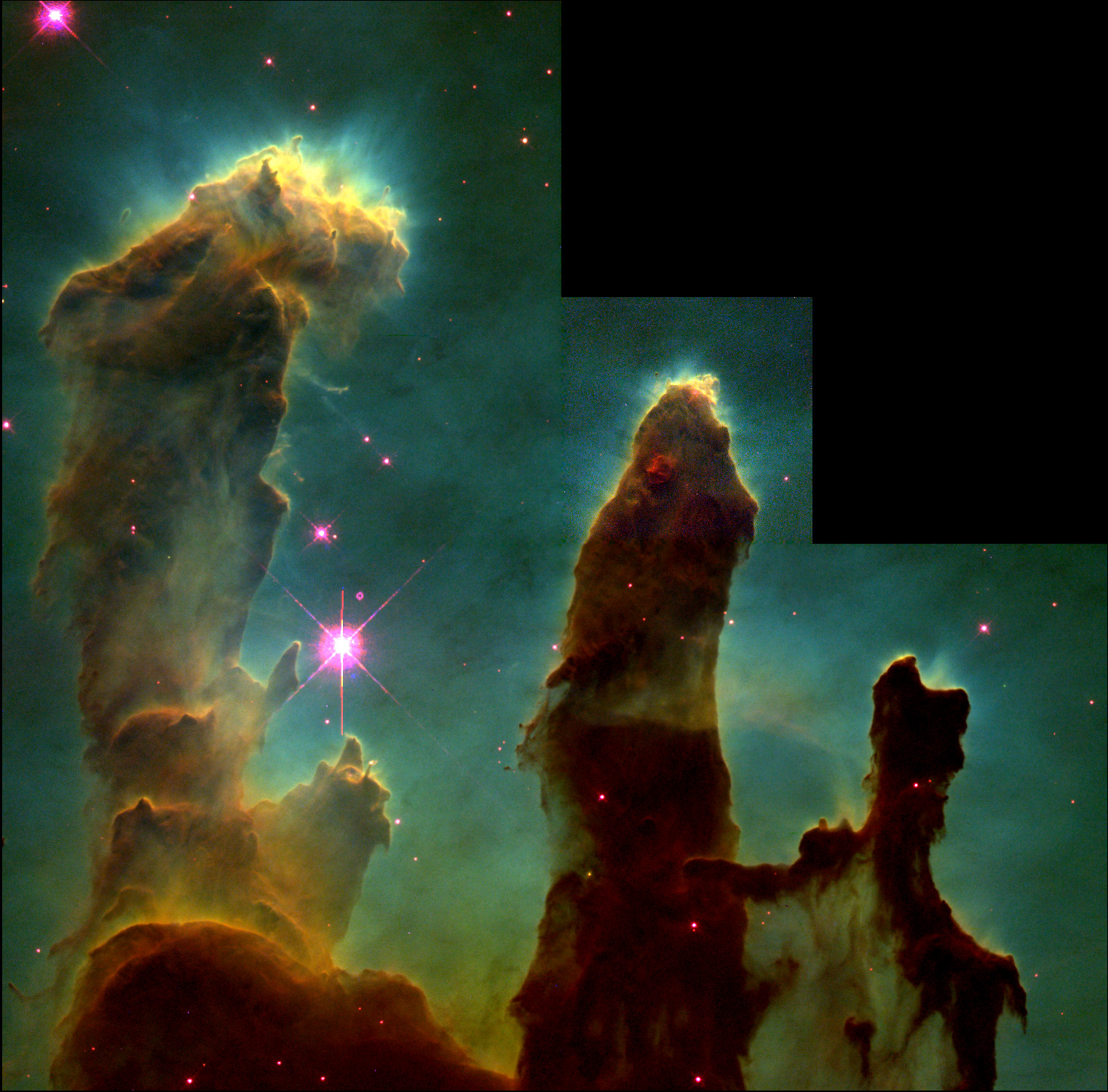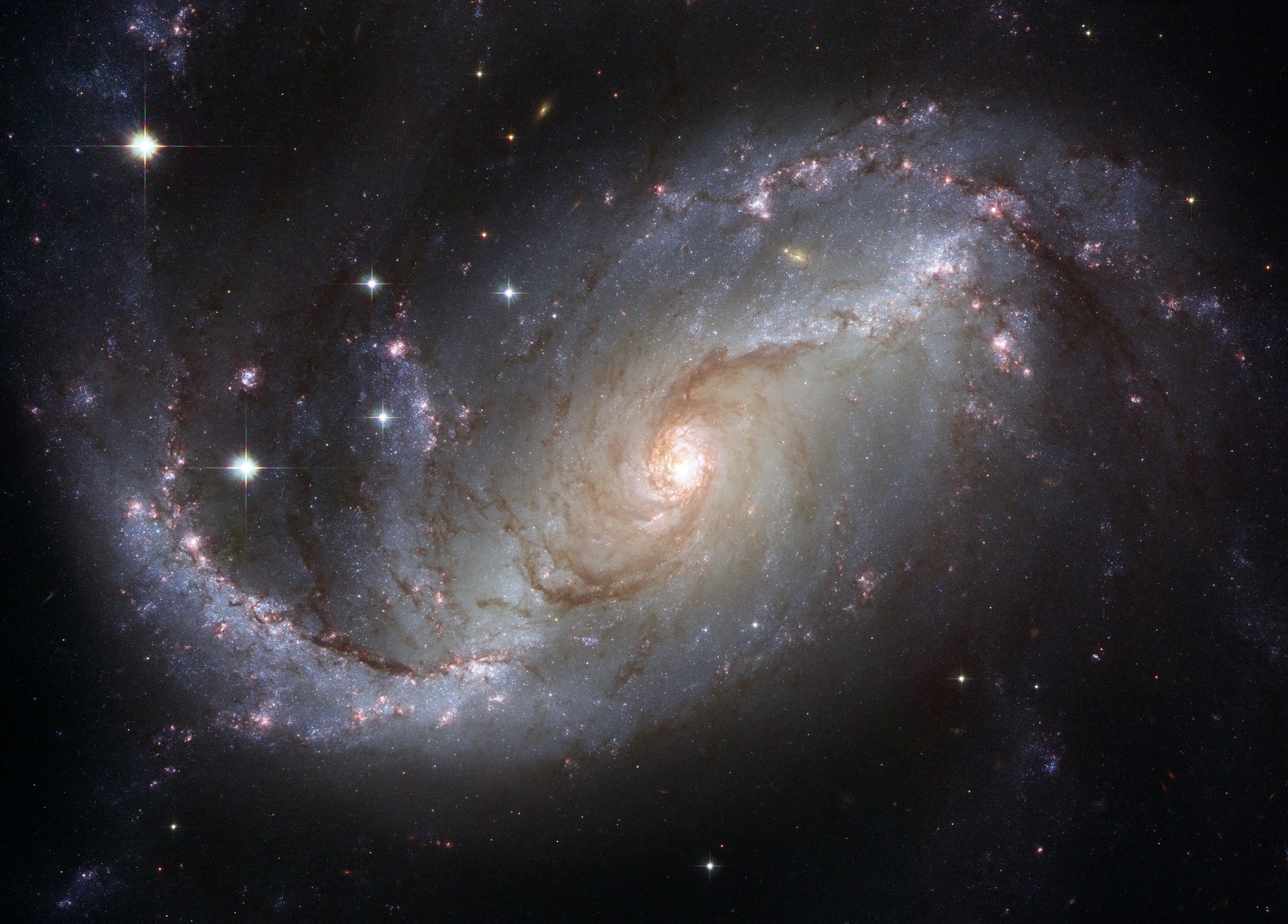Passion of the People – 1.1.12
Reaching for the Stars – The 20th Century
Important theoretical work on the physical structure of stars occurred during the first decades of the twentieth century. In 1913, the Hertzsprung-Russell diagram was developed, propelling the astrophysical study of stars. In Potsdam in 1906, the Danish astronomer Ejnar Hertzsprung published the first plots of color versus luminosity for these stars. These plots showed a prominent and continuous sequence of stars, which he named the Main Sequence. At Princeton University, Henry Norris Russell plotted the spectral types of these stars against their absolute magnitude, and found that dwarf stars followed a distinct relationship. This allowed the real brightness of a dwarf star to be predicted with reasonable accuracy. Successful models were developed to explain the interiors of stars and stellar evolution. Cecilia Payne-Gaposchkin first proposed that stars were made primarily of hydrogen and helium in her 1925 doctoral thesis. The spectra of stars were further understood through advances in quantum physics. This allowed the chemical composition of the stellar atmosphere to be determined. As evolutionary models of stars were developed during the 1930s, Bengt Strömgren introduced the term Hertzsprung–Russell diagram to denote a luminosity-spectral class diagram. A refined scheme for stellar classification was published in 1943 by William Wilson Morgan and Philip Childs Keenan.
The existence of our galaxy, the Milky Way, as a separate group of stars was only proven in the 20th century, along with the existence of “external” galaxies, and soon after, the expansion of the universe seen in the recession of most galaxies from us. The “Great Debate” between Harlow Shapley and Heber Curtis, in the 1920s, concerned the nature of the Milky Way, spiral nebulae, and the dimensions of the universe.
With the advent of quantum physics, spectroscopy was further refined.
The Sun was found to be part of a galaxy made up of more than 1010 stars (10 billion stars). The existence of other galaxies, one of the matters of the great debate, was settled by Edwin Hubble, who identified the Andromeda nebula as a different galaxy, and many others at large distances and receding, moving away from our galaxy. Physical cosmology, a discipline that has a large intersection with astronomy, made huge advances during the 20th century, with the model of the hot Big Bang heavily supported by the evidence provided byastronomy and physics, such as the redshifts of very distant galaxies and radio sources, the cosmic microwave background radiation, Hubble’s law and cosmological abundances of elements.


Further Resources
Links below will redirect you to external websites. In accordance with the European data protection declarations, we would like to point out that by clicking on these links you may send data to external providers. We cannot prevent that.
Images
 La Via Lattea – Getty Images
La Via Lattea – Getty Images
Videos
![]() Edwin Hubble, the Expanding Universe, Hubble’s Law. Astronomers of the 20th Century.
Edwin Hubble, the Expanding Universe, Hubble’s Law. Astronomers of the 20th Century.
![]() Progress of telescopic astronomy in the second half of the twentieth century
Progress of telescopic astronomy in the second half of the twentieth century
![]() 20 Astrophotography Youtube Channels
20 Astrophotography Youtube Channels
![]() Asteroids: Crash Course Astronomy #20
Asteroids: Crash Course Astronomy #20
 Il diagramma H-R (Agenda per il pianeta Terra) – Zanichelli editore
Il diagramma H-R (Agenda per il pianeta Terra) – Zanichelli editore
 Quanto si estende davvero la Via Lattea? Scoperte ai confini della nostra galassia | Documentario – Iodisea | Il Mondo delle Odissee
Quanto si estende davvero la Via Lattea? Scoperte ai confini della nostra galassia | Documentario – Iodisea | Il Mondo delle Odissee
 Che cos’è il redshift? – Amedeo Baldi
Che cos’è il redshift? – Amedeo Baldi
 Il suono del Big Bang – Amedeo Baldi
Il suono del Big Bang – Amedeo Baldi
Online Resources
![]() The Top Ten Astronomical “Breakthroughs” of the 20th Century (Hughes , David W., de Grijs, Richard)
The Top Ten Astronomical “Breakthroughs” of the 20th Century (Hughes , David W., de Grijs, Richard)
![]() The BBC Sky at Night Magazine offers insight in many topics of 20th-century astronomy.
The BBC Sky at Night Magazine offers insight in many topics of 20th-century astronomy.
![]() How Edwin Hubble Became the 20th Century’s Greatest Astronomer (Gilbert King, May 20, 2013. Smithsonian Magazine)
How Edwin Hubble Became the 20th Century’s Greatest Astronomer (Gilbert King, May 20, 2013. Smithsonian Magazine)
![]() NASA offers an “Astronomy picture of the day” which is explained by an astronomer.
NASA offers an “Astronomy picture of the day” which is explained by an astronomer.
 Henry Norris Russell – Associazione per l’insegnamento dell Fisica
Henry Norris Russell – Associazione per l’insegnamento dell Fisica
 Cecilia Payne – Torinoscienza
Cecilia Payne – Torinoscienza
 Via Lattea, nascita e caratteristiche della galassia in cui si trova il nostro pianeta – Luca Tortorelli, Geopop
Via Lattea, nascita e caratteristiche della galassia in cui si trova il nostro pianeta – Luca Tortorelli, Geopop
 Quanto è grande la Via Lattea? – Focus
Quanto è grande la Via Lattea? – Focus
 La nostra nuova rappresentazione della Via Lattea – Focus
La nostra nuova rappresentazione della Via Lattea – Focus
 La Via Lattea e Andromeda sono davvero sorelle – Focus
La Via Lattea e Andromeda sono davvero sorelle – Focus
 La futura ‘collisione’ tra Andromeda e la Via Lattea, guarda il video – Passione Astronomia
La futura ‘collisione’ tra Andromeda e la Via Lattea, guarda il video – Passione Astronomia
 Edwin Hubble: l’universo, le sue innumerevoli galassie e il “Big Bang” – wallife
Edwin Hubble: l’universo, le sue innumerevoli galassie e il “Big Bang” – wallife
 Legge di Hubble-Lemaître – EDU INAF
Legge di Hubble-Lemaître – EDU INAF
 Fondo cosmico a microonde, la luce “fossile” – Fabio Finelli, MEDIA INAF
Fondo cosmico a microonde, la luce “fossile” – Fabio Finelli, MEDIA INAF
Further Readings
![]() Astronomy of the 20th Century (Struve, Otto, Zebergs,)
Astronomy of the 20th Century (Struve, Otto, Zebergs,)
![]() The General History of Astronomy. Volume 4. Astrophysics and Twentieth-Century (Gingerich, Owen. 2010)
The General History of Astronomy. Volume 4. Astrophysics and Twentieth-Century (Gingerich, Owen. 2010)
![]() The role of astronomy in education. Astronomy and Astrophysics in the New Millennium (National Academies of Sciences, Engineering, and Medicine. 2001.)
The role of astronomy in education. Astronomy and Astrophysics in the New Millennium (National Academies of Sciences, Engineering, and Medicine. 2001.)
 Il Diagramma di Hertzsprung-Russell – Valentina Alberti, INAF
Il Diagramma di Hertzsprung-Russell – Valentina Alberti, INAF
Teaching Material
![]() Numerous open educational resources are offered by this website.
Numerous open educational resources are offered by this website.
![]() Training material on astronomy topics of the 20th century: lectures and online courses
Training material on astronomy topics of the 20th century: lectures and online courses
 Il diagramma HR e l’evoluzione stellare – WeSchool
Il diagramma HR e l’evoluzione stellare – WeSchool
 L’evoluzione stellare – Zanichelli
L’evoluzione stellare – Zanichelli
 La legge di Hubble con elastico e dita – EDU INAF
La legge di Hubble con elastico e dita – EDU INAF
For Kids
![]() A course for students aged 5 to 9. Each class has fun hands-on activities to learn about the life cycle of stars, supernovas, black holes, our galaxy, a space volcano on planet Lo, and the international space station!
A course for students aged 5 to 9. Each class has fun hands-on activities to learn about the life cycle of stars, supernovas, black holes, our galaxy, a space volcano on planet Lo, and the international space station!
![]() Astronomy course for kids, age 10 – 14
Astronomy course for kids, age 10 – 14
![]() All About Stars for Kids: Astronomy and Space for Children
All About Stars for Kids: Astronomy and Space for Children
![]() Let’s Explore Space! | Astronomy for Kids
Let’s Explore Space! | Astronomy for Kids
 Che cos’è la Via Lattea? – Focus Junior
Che cos’è la Via Lattea? – Focus Junior
 LA RADIAZIONE COSMICA DI FONDO spiegata facile #scopriamocose ep.2 – DivulgaMente | Alberto Giannone
LA RADIAZIONE COSMICA DI FONDO spiegata facile #scopriamocose ep.2 – DivulgaMente | Alberto Giannone
